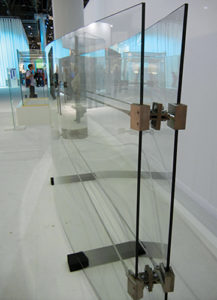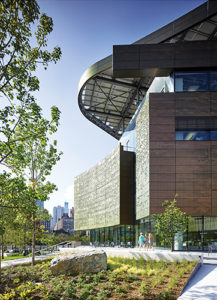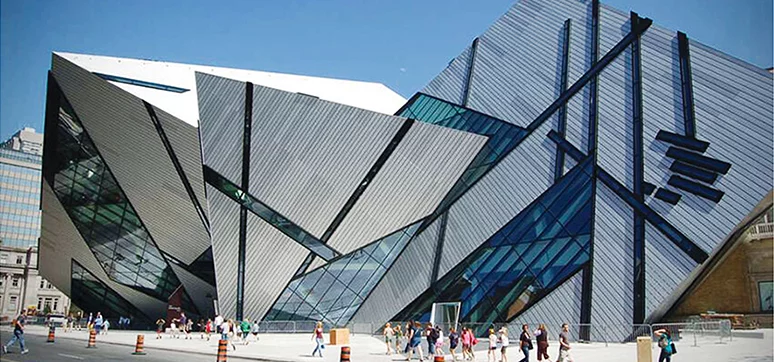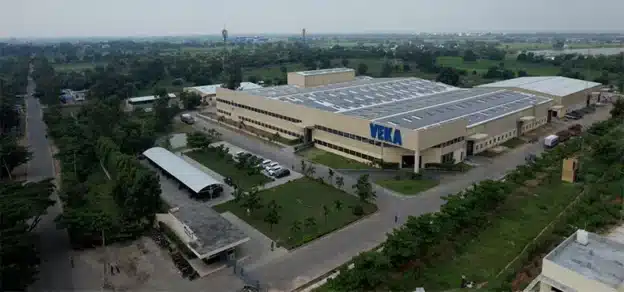“Let’s face it, sometimes you do judge a book by its cover, and a building by its façade…”Pondering back at architectural history, we observe that concerns related to façade treatment have gathered a multitude of consciousness to create a much pleasant visual impact to the public. But in today’s scenario, what goes beyond the frontier, is a building that stands the test of times, the one which is more than just a static vertical design constituent. The question that immediately strikes our mind is what if a façade is more than this conventional perception of its character; merely being a building envelope.
What if it is a living façade that changes with time its shape and size. What if it responds well to the climatic conditions, sunlight, wind and even day to day technology. There can be nothing better than a façade that adapts itself to the surrounding environment following its own path and pattern, defining new trends in architecture and setting standards to minimise the energy consumption, thus giving us major goals of dynamic yet sustainable façades.
An Introduction To Façade Of Future:

The design of façades that does not become obsolete in the upcoming future and gels perfectly with the building interiors as well as creates a reflection of its exteriors is the need of the hour. They hold a strategic position in the environmental performances of buildings and are a representation of its quality that creates an everlasting impact on the end-users or the passers-by. It forms the barrier between the internal space and the external climate and acts as the medium of interaction between the activities taking place at both ends. The image of a building, and therefore for the users is a reflection of its façade design.
It has been seen that in recent practices, architects and engineers have been strategically designing and installing dynamic façades to enhance the aesthetic values, at the same time taking measures for improving the buildings’ energy performance. The concept of ‘environmental planning’ is raising the bars of thinking about the future of these façades where environmental sustainability is of paramount importance. Eco-friendly and sustainable architecture is not a fashionable design concept anymore, but it is the only way to deal with architecture today. This poses an important question, as to what are the energy requirements and those new products for the façade design that comply with the requirements of energy.
Façade And Humanisation:
Is it the material technology or the user’s experience linked with the façade design??

Façades are an integral part of architectural design from the human perspective as the prime concern of any design is to focus on its end usage and the purpose for which it is built. The building façade provides the opportunity to create a personality and character to a building. A simple yet elegant façade design can suddenly bring a character to a building and how it will be perceived. Dealing with humanisation and its architectural quality means to focus the human needs and understanding their interaction with the environment.
In these terms, it is not easy to define the architectural quality, because it is based on principles, which in turn are not quantifiable, thus leading to a façade that just adds value to the building. The spaces serving any built structure not only communicate and represent their health content, but also provide stimuli affecting the user’s psychological well-being, satisfying his or her needs of humanisation. An example of a façade that humanises the surroundings is the Shanghai Theatre building encircled by a moving veil, which adapts to the changing use of the building and reveals the stage on the balcony and views towards the city of Pudong.

Nowadays, building façades with curtain wall technologies ranging from double-wall systems to integrated solar to specialty coatings and films, triple insulating glass units and dynamic glass products have a big impact on the flow of air and light on a building as well as how it copes with environmental conditions. With the inception of framed structures, precast and prefabricated façades came into the picture. The same factors are going to define the future façades.
Popular Trends in Facade Design

Ventilated Cladding:
The use of double-skinned glass with frameless photovoltaic panels provides an energy-efficient system for cladding purposes on building skin. As a way to retain the Chinese shipyard’s character and material essence, the architect has designed a permeable brick wall for its west-facing, main façade. Four different shades of red clay bricks, suspended by stainless steel-wire fixtures, form a gradient pattern that changes in density and fades towards the exposed south elevation, a visual reminder of its demolished brick façade.
Mood Facades:

The outermost layer of the Bloomberg Center’s façade is composed of aluminium panels surfaced in an iridescent, PPGpolymer coating, which, from afar, register a continuous image pattern that mirrors several of the site’s views, thus creating different moods of the building façade. The façade’s 337,500 tabs were mechanically punched by a welding robot, controlled by an algorithm.
Parametric Facades:

It facilitates the generation of design alternatives using stochastic algorithms and their evaluation using multiple environmental performance metrics. In the presented design experiment, a façade panel is modeled into an agent-based fashion and the multi-agent system toolkit is used to generate and evolve alternative façade panel configurations based on environmental parameters (daylight, energy consumption); a method of finding modular design alternatives by exploration in a 3D software.
Using the solid mass of concrete enveloping the Nassau Veterans Memorial Coliseum as its framework, SHoP Architects have created an intricate metal façade of folded fins with 225,000 Sq ft of Alucobond® PLUS, an ultra-light and flexible aluminium-composite material. Each of the 4,700 brushed-aluminium fins that make up the latticework differs slightly in profile and dimension, creating a subtle flow of light and reflection over its surface. Parametric texture and undulated surfaces applied in parametric designs could be inspired by nature. When looked deeper, it is seen that breathing façades are a kind of parametric façades only.
Breathing Facades:

“Nature” is one of the wonderful blessings of God that have been an inspiring concept to tackle the world’s biggest challenges. Mimicking nature is not a new approach but has been recently reformulated under the scientific term” “biomimicry”. As we said earlier, the building skin is an essential parameter for building performance. Also, it is a medium through which intelligence can be imparted to a building system to respond to an environmental stimulus. So the key characteristic of an effective smart building façade is its ability to save energy through its texture.
The scientific term “biomimicry” aims to innovate non-biological systems inspired by nature. The various methods of thermal adaptation to the hot climate found in nature provide a wide source of inspiration to develop new concepts for achieving thermal comfort. Biomimicry introduces “breathing skin” as a bio-inspired idea, found in the skin of living organisms. So based on this concept, the buildings with breathing façade design, provide a rich connection between the exterior environment and interior spaces, and they breathe through thousands of pores.
Timber Cladding:
Timber is a material perfect for this due to its environmental credentials, cost, installation properties and its ease of use. Timber cladding has potential to create façades that provide value to a building, as well as create stunning aesthetics.
Conclusion:
Thus the façade brings the building to life and is a Medium of Experience for the users in and around the building providing the opportunity to create a character and giving a persona to a building that highlights its character. Though it should be attractive; living with time but the façade isn’t just an aesthetic element; it’s an essential parameter for building performance along with being a significant contributor to the energy conservation and comfort parameters.














